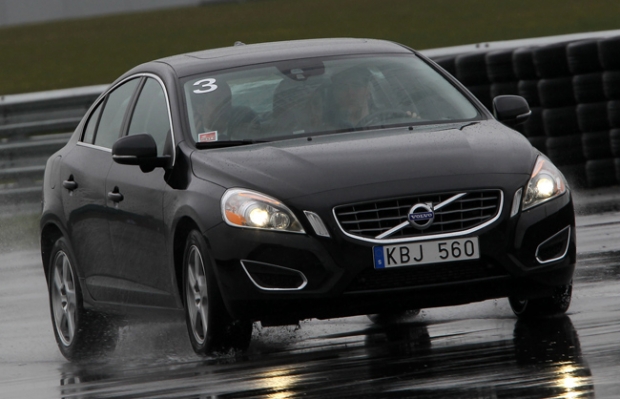Volvo Car Group and engineering company Flybrid Automotive, part of the Torotrak Group, have been conducting UK tests of lightweight Flybrid® flywheel KERS technology that boosts performance while cutting fuel consumption and emissions.
The four-year partnership, using real-world driving data from tests on public roads and test tracks in both Sweden and the UK, has shown that the flywheel-based hybrid technology can deliver an 80hp performance boost, together with fuel savings of up to 25 per cent. The research forms part of Volvo’s continued Drive-E Powertrain research and development programme, which demands no compromise between performance and efficiency. Just like its recently launched D4 engines, which combine 181hp performance with CO2 emissions as low as 99g/km, the Flybrid® KERS tests deliver similarly impressive results and confirm that it is a lightweight, financially viable and very efficient solution.
The system is the first full-scale trial of a rear-axle mounted flywheel system in a front-wheel-drive passenger car and is the result of a partnership between Flybrid, Volvo and the Swedish government.
The Flybrid® KERS (Kinetic Energy Recovery System) is fitted to the rear axle of an S60 powered by a 254hp five-cylinder T5 petrol engine. Under braking, kinetic energy which would otherwise be lost as heat is transferred from the wheels to the KERS, and is used to spin a 6kg carbon fibre flywheel at up to 60,000 revs per minute. When the car starts moving off again, energy stored in the spinning flywheel is transferred back to the rear wheels via a specially designed transmission, and can either boost power or reduce load on the engine. The combustion engine that drives the front wheels is switched off as soon as braking begins. The energy in the flywheel can then be used to accelerate the vehicle when it is time to move off again or to power the vehicle once it reaches cruising speed.
If the energy in the flywheel is combined with the combustion engine's full capacity, it will give the car an extra 80 horsepower and, thanks to the swift torque build-up, this translates into rapid acceleration, cutting 0 to 62 mph figures by seconds. The experimental car, a Volvo S60 T5, accelerates from 0 to 62 mph around 1.5 seconds quicker than the standard vehicle. The KERS drive to the rear wheels also offers the experimental car part-time four wheel drive to add extra traction and stability under acceleration.

27 March 2014
Volvo tests Flybrid Flywheel KERS technology
by

